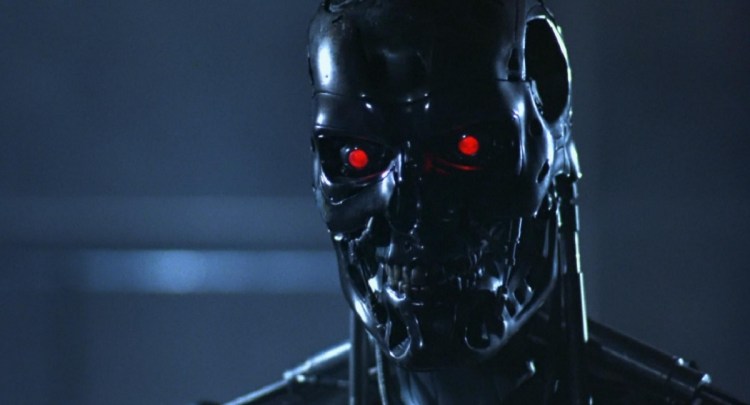Artificial intelligence gets a bad rap in pop culture. Whenever A.I. is mentioned in the news, the running joke is that humanity is near a Terminator-esque scenario where A.I. weapons take over the world. The truth, at least circa 2016, is much less entertaining — and, fortunately, much safer for the human race. Taking this more grounded approach to computer intelligence, how can it be used for business? And how can you strike a balance between automation and human decision-making?
Let’s start by defining what A.I. actually is. The push for intelligent machines can be broken down into two schools of thought:
Artificial Intelligence: There are those who believe believe in fully autonomous machines, ones that can be taught to replace human functions, weighing different variables and making educated, thoughtful decisions. One great example of this in popular culture is the android Data from Star Trek: The Next Generation.
Intelligence Amplification: Others seek something slightly different from A.I., instead looking at intelligent machines as tools for humanity. In a way, we’ve been using I.A. in crude forms for years, from the abacus to calculators to Google’s predictive search text. I.A. looks more at the level of computing than the level of intelligence, and could theoretically be anything from an implant that boosts brain function to a computer program that offers predictions based on trends.
In both cases, the goal is to boost the capabilities of humanity through the use of computer processors. But while both have their lofty sci-fi-themed end goals, the current capabilities are a little more down to earth — and their functions for the business landscape are quite different. There is a time and place for each to fit in, but it all depends on the proper balance between human intelligence and artificial intelligence.
The current capability for fully autonomous machines allows A.I. to thrive in situations with a structure, a clearly defined goal, and limited inputs and outputs to consider. In these contexts, A.I. may be able to calculate all of the inputs and outputs, process them through an elaborate algorithm, and make a decision that produces the most benefits or solves a problem. If this algorithm is repeatable and the variables are controlled despite their variation, A.I. is extremely well-suited for this task. A theoretical example would be a parts distribution machine at a manufacturing plant. If the A.I. could have a central database of all designs and required parts (structure), along with real-time feedback of usage on the manufacturing floor and urgent requests (controlled variables), it could process and prioritize parts distribution in the most efficient way for just-in-time engineering (clearly defined goal). The A.I. is making an intelligent and autonomous decision at a speed much faster than humans could, and with much more precision and consistency. With proper usage, A.I. machines can minimize, or even eliminate, certain types of accidents, injuries, and delays.
On the other hand, a human may employ I.A. to handle all of the processing of information, allowing for a quick overview of gathered data points — something that would have taken days by hand — so the human mind can weigh the pros and cons to craft a final decision. Of course, most real-world decisions don’t operate with as many constraints or finite variables as the example above. In fact, many businesses have to take in nearly unlimited factors without a clear problem or goal. A good example is the decision of whether to buy and absorb a smaller business.
Let’s assume a corporation is considering this action, and the variables to weigh include things like the smaller business’ design history, the market, the efficiency of the current staff, the absorption of payroll, the impact on shareholders, and the media’s verdict, just to name a few. Intelligence amplification can gather analytics on each of these, usually in the form of a computer algorithm and historical data, but only a human mind can handle the complex thinking needed to navigate the decision. Ingenuity is a uniquely human trait, at least for now.
As an entrepreneur, I value the dream of A.I. However, it has a long way to go before it could effectively replace me in the complex situations brought forward by the startup realm. Entrepreneurs get feedback from people in all walks of life: staff, friends, family, colleagues, mentors, advisers, etc. That data and information is a personal archive, and, when pooled with my collective experience, it allows me to weigh the pros and cons of a decision that could impact multiple business units and stakeholders. I.A., on the other hand, can help gather, organize, and provide analysis in these complex environments. Most business people may not even realize they use I.A. everyday when they look at their website analytics. But these tools help me — and you — become much more effective decision-makers.
In the A.I. realm, the goal circa 2016 is to find ways that pure automated decisions can replace simple human tasks using the criteria of a goal, structure, and constrained variables. Many tools are actually available for businesses to use right now, and they don’t have to look like a sci-fi character to help. X.ai is a great example of pure automation: It reduces human involvement for scheduling meetings, thanks to satisfying the criteria above.
For now, businesses can put both A.I. and I.A. to good use to save time, money, and energy. On their own, neither technology can run a successful business (outside of a simple stock-and-sell retail service). However, when they’re employed as complementary parts of the decision-making process, executives have a tool to make themselves smarter, faster, and better-informed. And the capabilities of A.I. and I.A. are only going to get better.
VentureBeat's mission is to be a digital town square for technical decision-makers to gain knowledge about transformative enterprise technology and transact. Learn More

